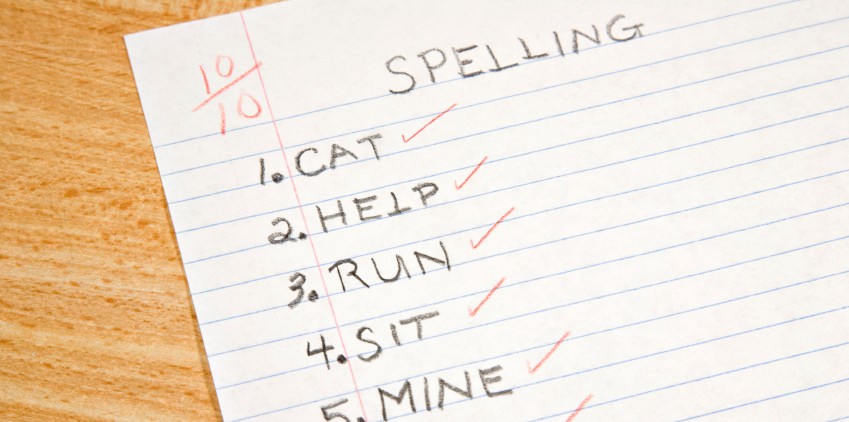Is spelling still relevant in the 21st century classroom?
We think so! Although in the real world (where we are hoping most of our students end up!) most writing is now done on computers with spell check, there are still a few important reasons for students to learn to spell. One, a person has to at least get close to the correct spelling for spell check to recognize what word he was intending. Two, there are many instances (job applications, medical forms, live presentations, etc.) where proper spelling is required… in writing… on paper. Three, there are still some occupations that require good spelling. For example,
The person who paints words on the street.
The person who tattoos words onto other people’s bodies.
A person who makes public signs.
All right, so students still need to know how to spell!
So, what should spelling instruction look like in the classroom, today? Well, let’s start with the types of words that should be taught.
First, we encourage you to take a look at the spelling patterns specifically mentioned in the standards for your grade. For example, in Common Core Grade 2, the spelling standard reads: Language 2d. Generalize learned spelling patterns when writing words (e.g., cage – badge; boy – boil).
For more specific information on the types of spelling patterns the standards are referring to, see Common Core Appendix A (pp. 20-21). Some of these spelling patterns include: doublets, digraphs, trigraphs, and consonant blends. In order to create an accurate, grade-appropriate list, a teacher should cross reference this list of spelling patterns with a list of grade-level appropriate words, such as this one developed by DataWORKS.
Spelling words should be organized in lists by the type of pattern they represent. This gives teachers the opportunity to explicitly teach the rule at the beginning of the week.
For example, using the Grade 2 standard above, and cross-referencing it with the DataWORKS Grade 2 word list we developed a spelling list of words with the ch- and sh- initial digraphs.
DataWORKS would begin by giving students a pretest to see which of the words they already know how to spell. Students should only be practicing and reviewing grade-level appropriate words that they don’t already know how to spell. So, a pretest at the beginning of the week quickly informs teachers which words each student needs practice with. On day two, after correcting their own pretest, students would be asked to form a list of the words they missed and write those words (only the ones they missed on the pretest) five times each. This gives them repetitive practice in the correct formation of the word.
A digraph is two letters that make one sound. ch sh
Initial digraphs come at the beginning of words.
We would expect the teacher to help students pronounce each digraph and point to examples in the table of words that contain this digraph. After this instruction, we would ask the students to take the original spelling list and sort it by initial digraph. This gives them yet another opportunity to write the words correctly, and shows us that they understand the concept of the initial ch- or sh- digraph.
Day 4 would consist of finding and correcting misspelled words from the spelling word list. This is one of the toughest skills for students and is also the one that is most commonly tested. DataWORKS would give students a list of 8-10 sentences each with a misspelled word. In the first half of the sentences, the misspelled word would already be underlined for them so they simply have to correctly spell it on the line. The second half would require the student to locate the misspelled word on their own and then correctly write it on the line. This takes the skill to the next level because students often have difficulty locating the word that is misspelled.
The last day of the week we would administer a posttest using the same full list of words that we pretested earlier in the week. Immediately following the posttest DataWORKS would ask students to reflect on any words they missed again on the posttest and list ways they can improve in the future.

